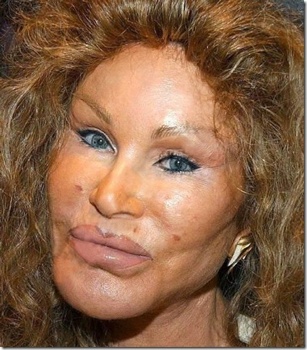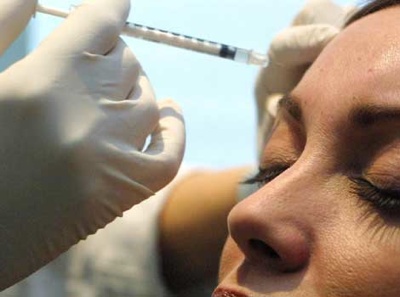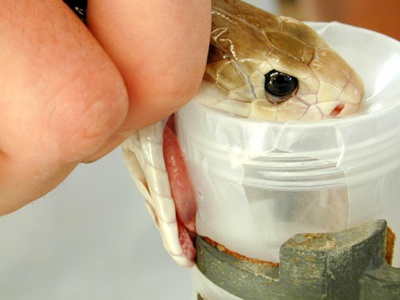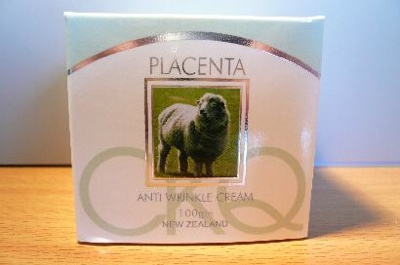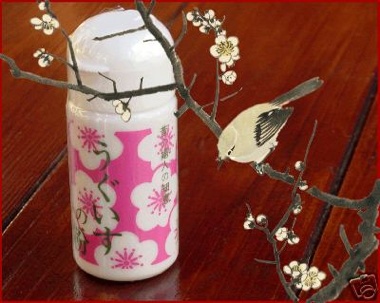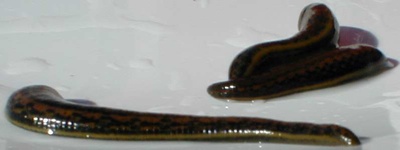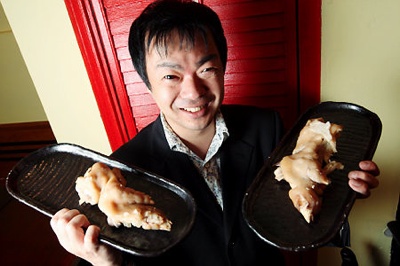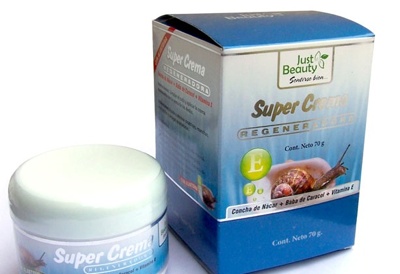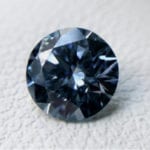Collagen injections are used to smooth out frown lines, crows feet wrinkles, and smile lines as well as to give the appearance of full lips. Like botox, this procedure is quite common but where the main ingredient comes from is just bizarre. Notwithstanding the ninth item on this list – there are two main sources of collagen, a protein responsible for skin strength and elasticity, bovine (cow) and… human. About three in 100 people experience an allergic reaction to bovine-derived collagen which has prompted manufacturers to source collagen from aborted fetuses, placentas, and donated cadavers as the probability of an allergic reaction is virtually non-existent. Possibly the most morally outraging source of collagen is the rumored harvesting of collagen from executed prisoners in China, taken without the consent of the prisoner or their family and exported to the UK for socialites to shoot into their faces.
While the botox procedure to prevent frown lines and wrinkles may sound fairly familiar and commonplace if you think about what you’re having injected into your skin it really is quite bizarre. Botulinum toxin (bo + tox = botox) is one of the most poisonous naturally occurring substances on the planet and the single most toxic protein. Eating food contaminated with Clostridium botulinum can lead to serious food poisoning (the fatality rate is 5 to 10%) if there is toxin present. One microgram (1/1000000 of a gram) is lethal to humans. The amounts used in cosmetic procedures are consequently very small.
The neurotoxins produced by members of the cobra family of snakes (and some vipers and rattlesnakes) act on prey by blocking the nerve impulses to the muscles and inducing paralysis. Realizing that snake venom could produce a similar effect to that of Botox, the beauty industry has come up with a synthetic form of snake venom that is applied to the face as a cream rather than injected. It is meant to be safer and less invasive. The venom that was used to create the synthetic version comes from ‘snake farms’ in Brazil where thousands of snakes are ‘milked’ for their venom.
According to manufacturers of the product, placenta wrinkle cream derived from bovine placentas can slow down the appearance of visible signs of aging by moisturizing skin and combating wrinkles. Some companies also use plant placenta (yes, flowering plants have placentas!) and even human. Claims were first made in the 1940s (when this idea was first marketed) that the nutrient rich placenta gave off the benefits of hormones and stimulated cell growth. Since the FDA quickly decided that this constituted a medical claim, saying this became illegal in the US. The manufacturers changed these claims to say that the proteins present in the placenta moisturize one’s skin and hair.
How dedicated are you to having smooth, shiny hair? If you’re serious enough there’s the option (in the UK at least) to have a hairdresser massage bull semen into your scalp. The reasoning behind this “ewww” inducing idea? Hair is made up of protein, although essentially your hair is dead, and some proteins can help form a protective layer around the hair. Some people thought it would be a good idea to market protein treatments as a way of keeping your hair healthy anyway. The supposedly ultimate source of concentrated protein? Bull semen.
There is an old Japanese beauty secret making its way over to the western world. It’s called ‘uguisu no fun‘ or sterilized nightingale droppings. An enzyme called guanine (also added to various make up products for its pearly sheen) found in the nightingale’s droppings apparently does a good job of bleaching and exfoliating skin. Kabuki actors and geishas have been using uguisu no fun for hundreds of years to remove make up and to keep their skin soft. The joy of spreading bird excrement on your face doesn’t come as cheap as a jar of Olay though. It’s around twenty US dollars for one ounce. If you’d rather have someone else do the smearing, you can go to the Shizuka Day Spa in New York and $180 later your face will be smooth and soft.
If you’re willing to give the leeches a go, you might also be interested in letting a school of small fish nibble the dead skin cells off your toes. The idea is that you put your feet into a tank containing a species of carp (doctor fish) and wait 15 to 30 minutes while they feast on your calluses. Because the fish are toothless the process is meant to be very safe, as they can only suck off pieces of dead, flaking skin. In Turkey, where the treatment originated, the fish live in natural hot springs and are a popular skin care option for the people who bathe there.
Letting blood-sucking parasites attach their slimy bodies to you as a ‘detox’ sounds like a questionable idea. However, leech therapy, or hirudotherapy, has been practiced since 1020 AD for treating skin disease and helping patients recover from surgery. These days, leeches can be used in the treatment of varicose veins, reducing blood coagulation, and helping stimulate blood circulation in reattached organs that require critical blood flow. If you are more adventurous you can follow in the footsteps of celebrities, such as Demi Moore, and make your way to Austria to have your blood feasted on by the medicinal species of leech, Hirudo medicinalis.
This odd treatment isn’t plastered on your face, or combed through your hair, but eaten instead. Pig’s feet are being marketed as an edible way to combat wrinkles by New York restaurant Hakata Tonton’s owner. He figures that since the tootsies of the pig contain a high amount of collagen (which is used in anti wrinkle creams and lip injections) a person might as well eat them to gain similar benefits. Although collagen is one of the major proteins involved in maintaining skin and muscle tone, consuming a meal of pig trotters is almost certainly a less effective method of keeping the scalpel away than simply maintaining a healthy diet, exercising regularly, and staying out of the sun.
Because snails can heal and regenerate their shells using the slime they secrete the beauty industry is now using the slime of the common garden snail species (Helix aspersa) in beauty products. The myriad of claims for its efficacy range from getting rid of acne to improving stretch marks and scarring. The snail secretion, which is also used by the snail to reduce friction as it moves, seems to have anti-bacterial in addition to antioxidant qualities. If it works for the snail, why not put it on your face? Contributor: downhighway61, and Tempyra
